EDNA WALLING'S GARDEN
Photos taken by Edna Walling and scanned from her book "Gardens in Australia, their Design and Care" The book was printed by Oxford University Press, Leighton House, Melbourne, Australia in 1946

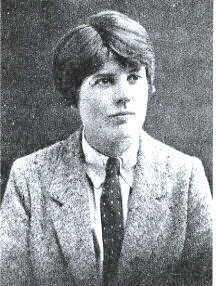
This is Edna Walling as a young girl attending the horticulture college. It is obvious from her dressing that her father's attempt to bring her up as a boy, worked in some aspects! I think that there would not have been many girls attending the college and this also may be the reason for such masculine attire
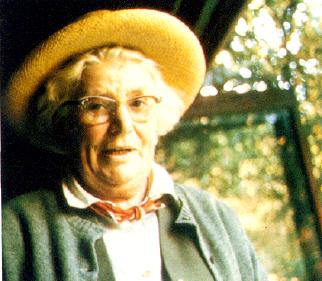
Edna Walling was still active in her elderly years.
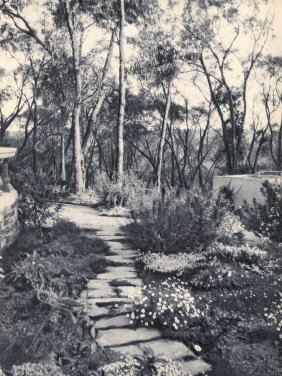
A typical flagstone path, Edna Walling has used both non native perennials and native Eucalyptus. A lovely path of which she writes - " The creeping plants on either side create their own line - a line more charming and elusive than any a human could devise"
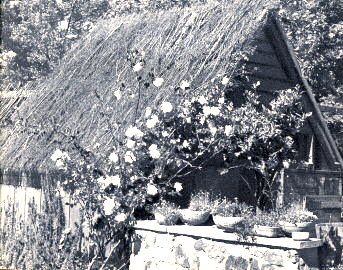
A potting shed with brushwood on the roof, hiding the corrugated iron roof. Soil, leaf-mould and sand are stored outside the shed in brick bins. Miss Walling goes on to state - "There are various chemicals on the market that hasten the decomposition of the humus-making material, and add to its fertility as well. The manufacturers go so far as to claim that the resultant composition is equal to fertility to farmyard manure, which is an acquisition indeed for those who have difficulty in securing this invaluable commodity or perhaps embarrassment in storing it". A hint of derision? - my remark
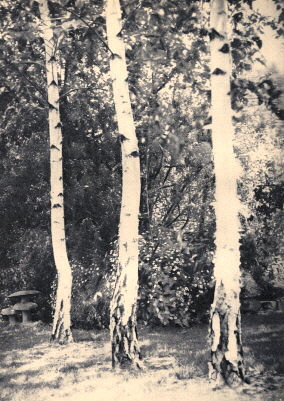
Miss Walling was very fond of using the Silver Birch trees. Can you see the toadstools sculptur in the back left hand side? I noticed when visiting the Cotswolds, England, that many of the gardens had toadstool decorations. I never found out the myth behind these adornments. I find these three far more attractive than the stodgy, one toadstool sculptures in those gardens. The predecessor to the Americans Pink Flamingos?
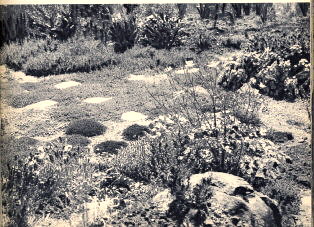
A Thyme lawn for those who dislike the noise of the lawn mower, every weekend. In many parts of Australia, the grass never stops growing. Miss Walling used Thymus serpyllum and Thymus serpyllum languinsom, on which she writes - "a lovely soft woolly grey foliaged variety which creeps about with amazing rapidity" The little hummocks in the photo are Herniaria glabra but she reassures the gardener that there are many plants that would delight the eye planted in the Thyme lawn
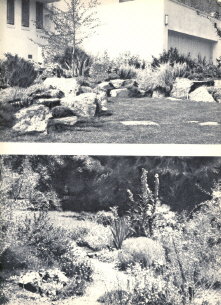
I hope you can see from these photos that Miss Walling landscaped many different gardens for many different clients, she was not daunted by the fame, [Dame Nellie Melba, the famous Australian singer, was one of her first clients] the wealth or the humbler station of her clients. Always she used a lot of stonework, the natural beauty she had learned to appreciate in the environment of the moors in England. This looks like quite a grand house
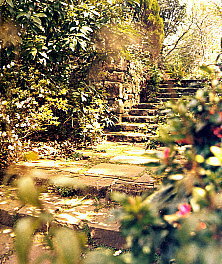
photo scanned from "The Gardens of Edna Walling by Peter Watts
Using rocks and boulders, this photo is showing a typical "Edna Walling" garden. Many of the gardens still remain, as do the detailed plans that she painted. The owners may have changed, but within the gardens, the backbone remains and if the gardens have deteriorated over the passage of time, there are societies that will help the newer owner restore and return the "feel" and the beauty of a "Edna Walling" garden so that later generations may enjoy the work of Australia's most beloved designer
There is so much more I could write but there is no room here. If you would like to discuss the beautiful gardens and Edna Walling, the lady landscaoe gardener, please leave a message in the discussion area on my Welcome Page, click up the top and on the right hand side. I love to hear from you